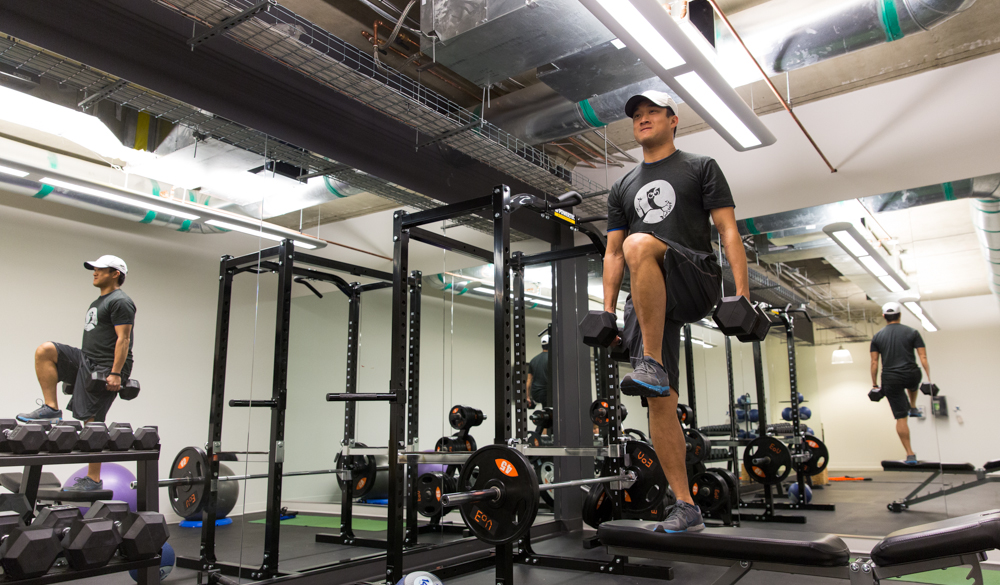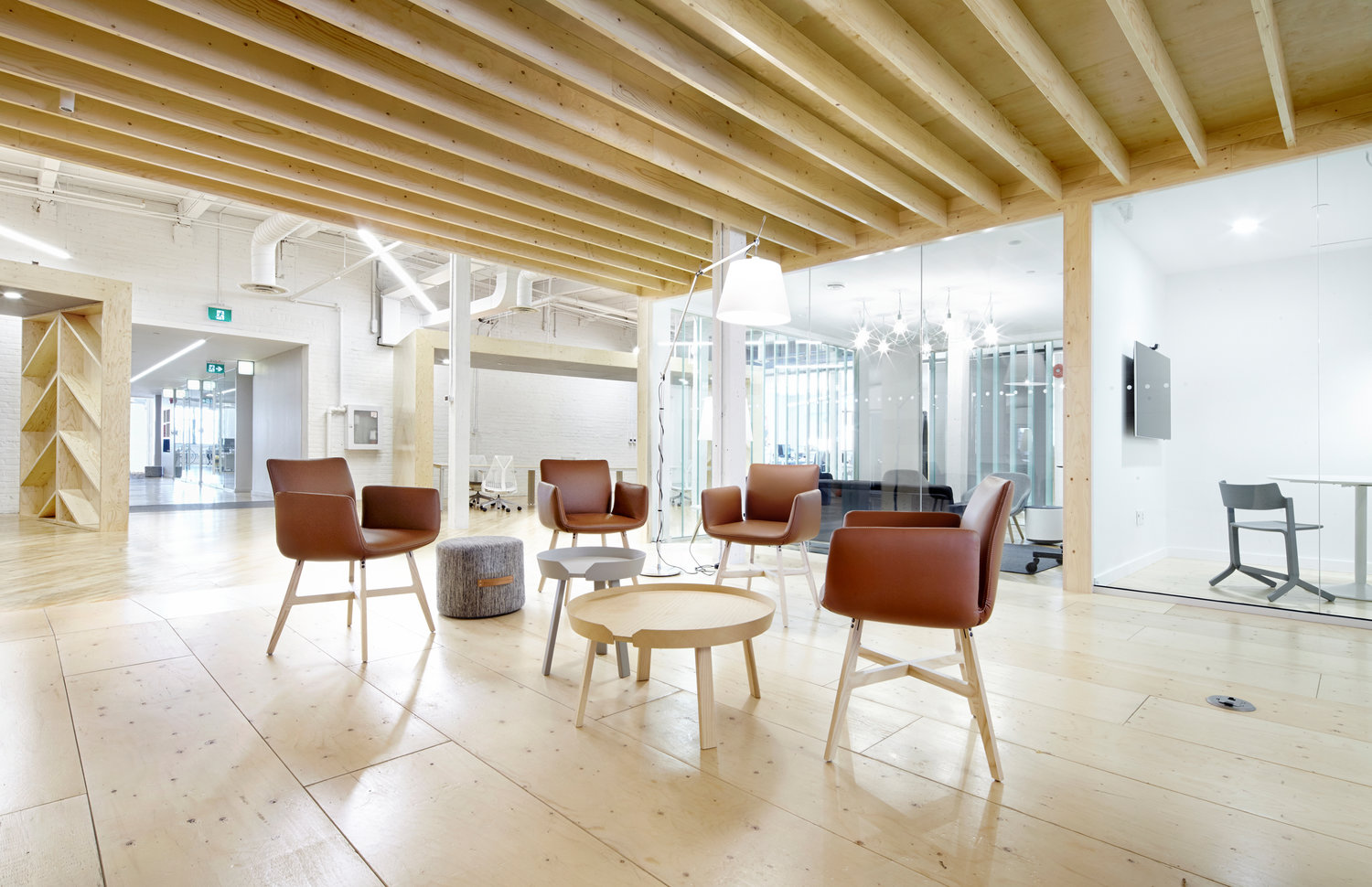Burnout, always-on work schedules, understaffing and other demands take a heavy toll on the well-being of employees, which is why employers are exploring new ways to keep their workers happy, healthy and productive. And they’ve made progress — many companies have made strides in all of the above by implementing everything from work-from-home days to strict no-work after-hours policies. But any physical and mental health benefits these improvements to work culture reap is easily undone if an employee is forced to return to the confines of a cubicle farm that encourages sedentarism, isolation, boredom and stress. With the right approach to office design, however, workplace wellness can be a great layout away.
PRIVACY DESIGN
Benefits: Increased focus and productivity
The Herman Miller-conceived open office concept was hailed as a tonic for subprime productivity. Instead, what we got were constant interruptions, sicker offices and a sharp increase in headphone sales among white-collar workers. Thing is, in addition to the social interaction and collaboration such workspaces allow for, more than half of worker activities require personal focus according to a 2013 U.S. survey by architecture and design firm Gensler. This makes privacy and autonomy an important missing ingredient. A hybrid office that gives employees a variety of quiet or task-specific getaways offers the best of both worlds. Balance can be achieved by implementing soundproof rooms, an abundance of hoteling desks that allow workers to retreat from annoyances and breakout areas just outside energetic spaces (allowing for a bit of independence without the social FOMO.)
Shopify (Toronto)
RESIMERCIAL DESIGN
Benefits: Less stress, more welcoming
There’s a reason working from home improves productivity and increases employee morale — comfort begets contentment. Because clocking in at 9 a.m. is a lot easier when the office feels like home, smart workplaces have embraced residential-style layouts and furniture — the foundations of so-called resimercial design — to bring the same mental health benefits back to the office. The restorative privacy of a bedroom is emulated by nap rooms (great for much-needed decompression) and, less literally, by private, sheltered workspaces that allow for focused work. Large communal tables with plenty of seating are perfect for collaboration, embodying the social aspects of a dining room. Couch-filled sanctuaries situated away from employee desks optimize socialization without compromising concentration.


VICE Media (Toronto)


Twitter Canada (Toronto)
BIOPHILIC DESIGN
Benefits: Fewer sick days, less stress
Incorporating natural elements in the workplace can be a breath of fresh air for employees, infusing offices with restorative effects like decreased rates of stress, sickness and turnover, according to a Human Spaces report exploring design that emphasizes the innate connection between humans and nature. (It also makes business sense, with absenteeism estimated to have cost Canadian companies $16.6 billion in 2012.) Developing an office with an abundance of natural light, greenery in the form of plants or living walls, calming views over bodies of water, natural wood and stone finishes or even fireplaces can boost wellbeing and productivity by 13 and eight per cent, respectively.


Shopify (Toronto)


Red Bull (Toronto)
ACTIVE DESIGN
Benefits: More exercise, decreased long-term health risks
Sedentary work has been linked to many negative health effects similar to those of smoking — a University of Leicester research group counts among them a 147 per cent higher likelihood of death by heart attack or stroke and a 49 per cent increase in premature mortality. That’s a problem when the average Canadian adult spends 50 to 70 per cent of their lives sitting, according to the B.C. Physical Activity Strategy. To keep employees moving, offices bearing the trademarks of active design make exercise convenient — they’ll sport bike lockers up front, for example, have well-appointed gyms with showers and allow employees to hotel at treadmill desks — or simply make movement a regular part of the workday with grand sculptural staircases, long catwalks and walkable neighbourhoods.


Hootsuite (Vancouver)


Lululemon Athletica (Vancouver)
FLEXIBLE DESIGN
Benefits: More creativity, less boring
Small businesses looking to save a buck and large corporations seeking a boost in creativity can equally benefit from the school of flexible design. Multipurpose rooms and spaces can take the edge off the daily grind by encouraging workers to interact (hoteling desks instead of assigned seating), relax or be active (board rooms that moonlight as yoga studios) and adapt (modular desks and informal layouts that can be switched up as the company grows). When the workplace isn’t tied down to conventional concepts, free thinking comes that much more easily.
SOCIAL DESIGN
Benefits: More collaboration and increased energy
When it’s a choice, energetic collaboration can be a beautiful thing — heck, even idle socialization has stress-relieving and productivity-boosting benefits, according to Gallup research — and offices embracing social design principles offer plenty of opportunities for it without imposing face-to-face interaction. Destination spaces like a hub of soundproof meeting rooms around a central stress-busting social space can foster spontaneous work sessions when a great idea strikes. Removing barriers between departments, particularly in open office situations, can improve workflow between groups who might not always work together directly and increase movement. Replacing the water cooler with an amply stocked open pantry provides a fresh take on the informal gathering space, while grand staircases can double as a fun, social setting for more serious business, such as town hall meetings.


Corus Entertainment (Toronto)
ERGONOMIC DESIGN
Benefits: Decreased long-term health risks
While active design keeps workers moving, design focused on ergonomics tailors the office to the employee, making repetitive and sedentary jobs much healthier. By removing undue physical stress and decreasing fatigue, ergonomically focused offices can reduce the risk of musculoskeletal disorders, which account for up to one third of an office’s illnesses and injuries, according to an Indiana University study exploring the benefits of ergonomic chairs in the workplace. Standing desks, adjustable monitor stands and adjustable task seating help promote more natural sedentary positions that improve posture and relieve strain on joints.








